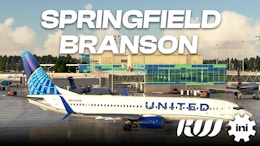Hans Hartmann has taken to the Twitch airwaves to share his most detailed preview yet of the upcoming ATR 42/72-600 for Microsoft Flight Simulator, which is being released in partnership with Asobo studios.
The planes have been in development for at least 2 years, having first been announced in April of 2021 on a developer livestream. We know that the ATR will be a payware product, although to date no pricing information has been shared with the community. Today’s latest stream saw Hans take viewers on a tour of the plane’s avionics suite, along with a short preview of a trailer being prepared for the ATR’s release, which is currently scheduled for release in April 2023 as the first in a new line of Asobo products – the “Expert Series”.
This new ATR42/72-600 for MSFS is likely to face some additional scrutiny on launch following the news in January that Blackbird Simulations (formerly known as Milviz) were halting development on their own ATR for Microsoft Flight Simulator, citing Hartmann and Asobo’s collaboration on their own product as the primary reason for their decision. It is likely that with Asobo’s prime positioning in the addon market, Blackbird felt that whatever they made would not be able to compete and be the revenue generator that it needed to be for the company.
That being said, lets take a deep dive into everything that was showcased today.

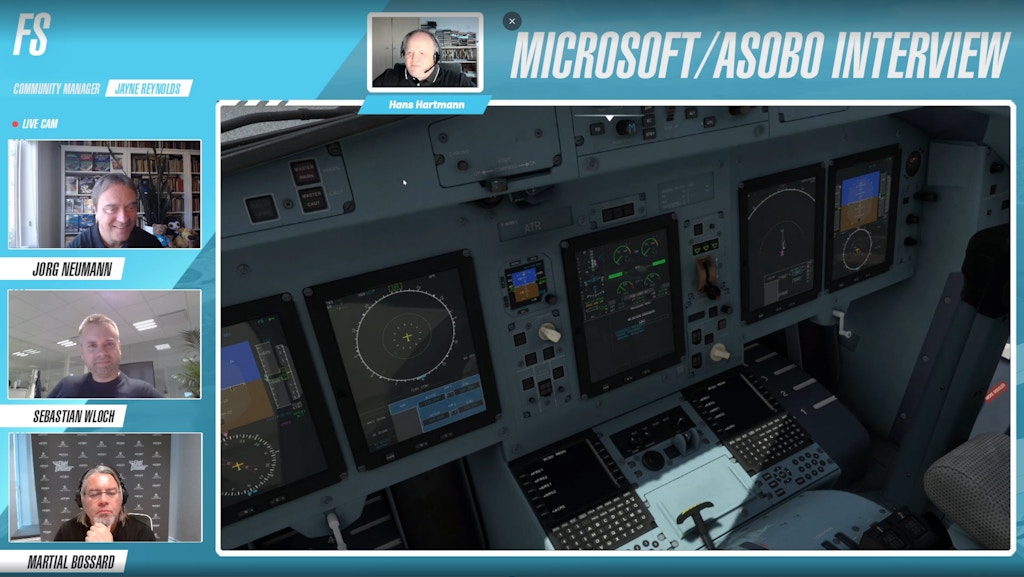

Starting the stream at 01:04:00, we first get to see the quality of texturing in the cockpit. It’s not a detailed look and more a passing glance, but from this glance we can at least see that the detailing is to a good standard. It does seem as if the textures are more reflective of a plane that has just come off of the factory floor and not one which has been in service for many years – in my viewing of the stream there was little in the way of visible wear and tear around the flight deck beyond some paint missing from the right thrust lever. If I am wrong on this though, I am happy to be corrected!
Furthermore, we see that the plane will be coming with an EFB (electronic flight bag), something which is sure to please simmers. Hans didn’t really touch on this in the stream although from the quick glance we got at it, we can see pages for weights and balance, performance, aircraft, maintenance and options. The EFB is apparently logged onto aviocomm.net, although having visited this URL it doesn’t appear to be a real domain – if you know something I don’t, let me know in the comments!
However, the focus of Hans’ update is the plane’s avionics, which he describes as ‘unique to any other airplane’. The ATR’s avionics are produced by THALES, a French company specialising in producing electrical systems for the aerospace, defence and transportation sectors. He first draws our attention to the multi-function display (MFD), and specifically it’s virtual control panel. It’s controlled by a few buttons positioned beneath the flight computer, and we’re pleased to see that as Hans moves his cursor around the cockpit and over each button, it appears the vast majority of them are simulated clickspots, a good indicator that the plane will live up to its “expert” classification.
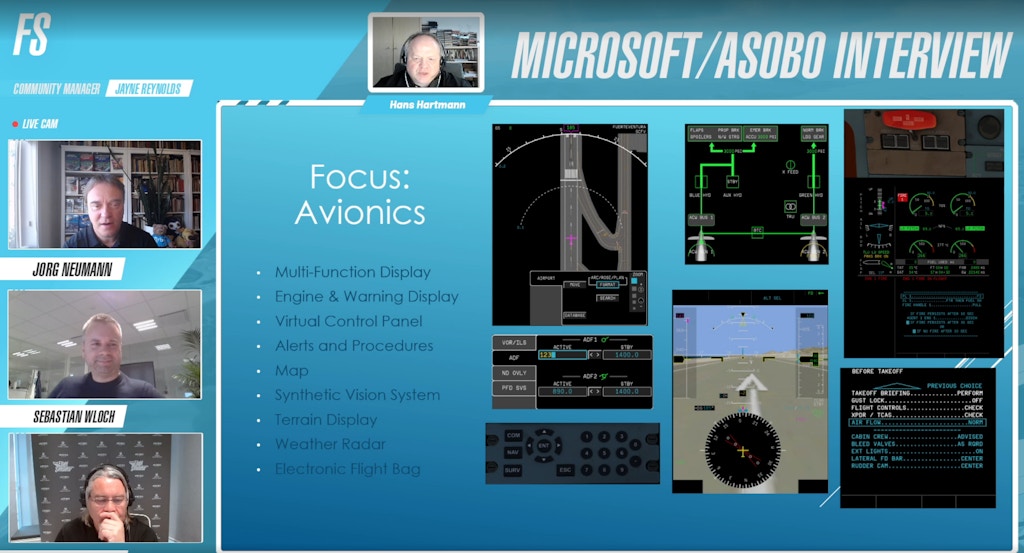
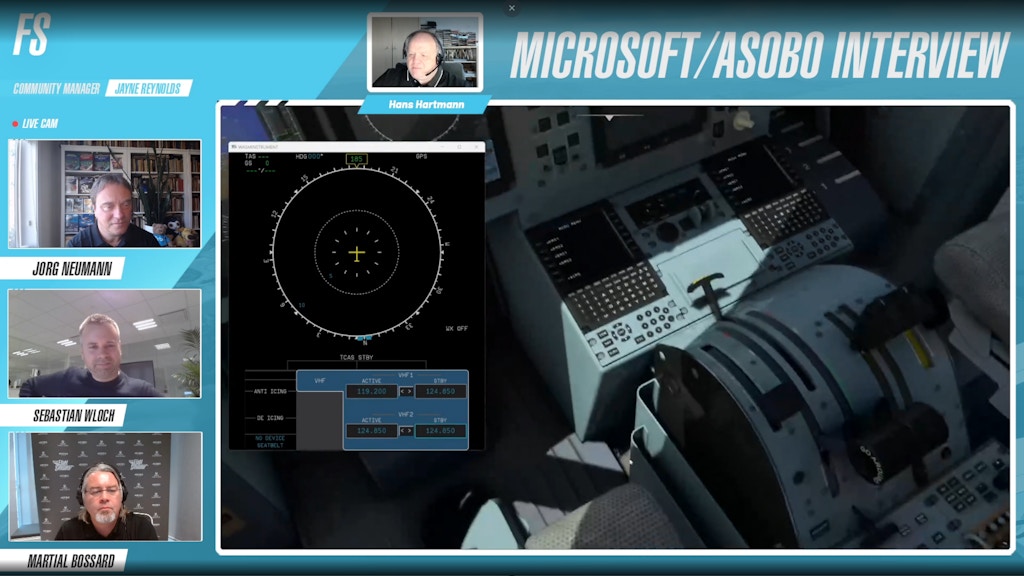
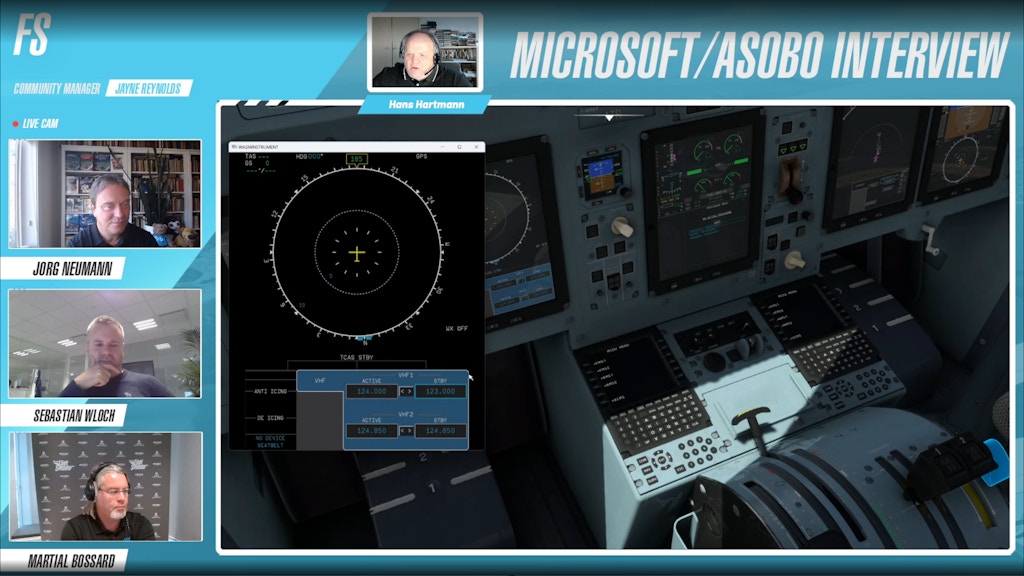
Hans explains that it’s not really possible to be using the MFD’s mode control buttons while looking out of the window due to the awkward camera angle this would require, and so fortunately for the benefit of simmers he says that a click interface – a bit like a touch screen – has been put into the sim to allow clicking the buttons on the MFD itself.
As well as communications and NAV frequencies, the MFD in the ATR also has pages built in for TCAS and radar. Hans also showed off the primary flight display which has an option for synthetic vision, although he did point out on stream that most people prefer using the traditional setup of a blue/brown attitude indicator.
Moving on, Hans showed that the MFD does not only serve as an ND, but can also show system status pages. On stream, he showed off pages for the plane’s electronics, hydraulics, and engines, and cabin pressure/temperature/oxygen/pressure. Hans was keen to talk about the ‘AC Wired’ system used by the ATR family of aircraft specifically. This is a generator which is based on the propeller turning, which means it doesn’t deliver a stable frequency hence the name ‘AC Wired’. The ATR also doesn’t have AC generators like most other aircraft and instead generators direct current, which is then passed through inverters to power the plane’s 2 AC BUS’s.
Another page showed off briefly showed the aircraft’s data, including weights, V speeds, takeoff and approach data, as well as options for de-icing.
Finally, Hans showed the MISC page, although at present this doesn’t have any features included with it. There is also a button to show a camera view of the aircraft’s cabin, although Hans honestly pointed out that at this stage pushing the button only brings up a static image and not a live feed. Based on this static image, it’s not possible (at least to my knowledge at the time of writing) to say whether the ATR will come with a modelled cabin.
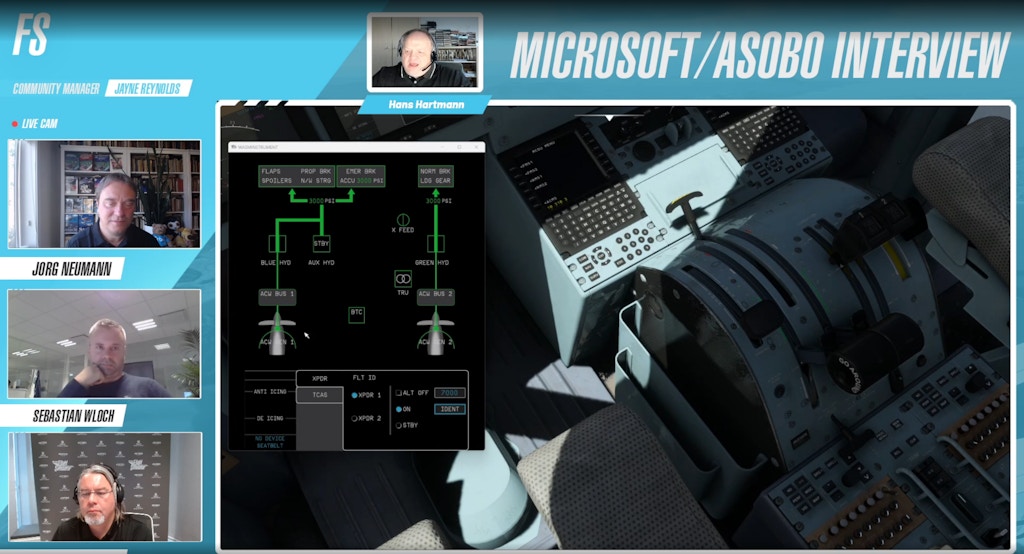
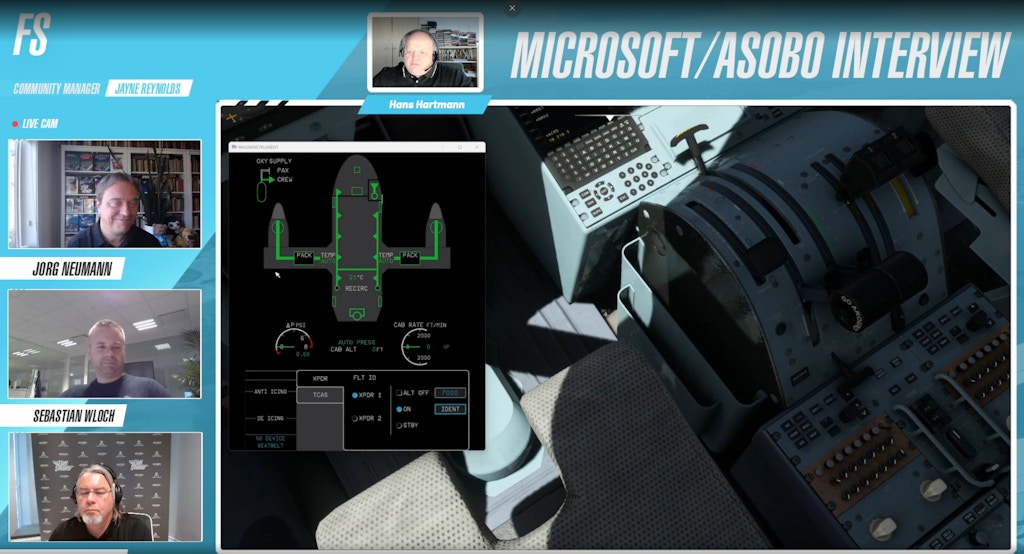
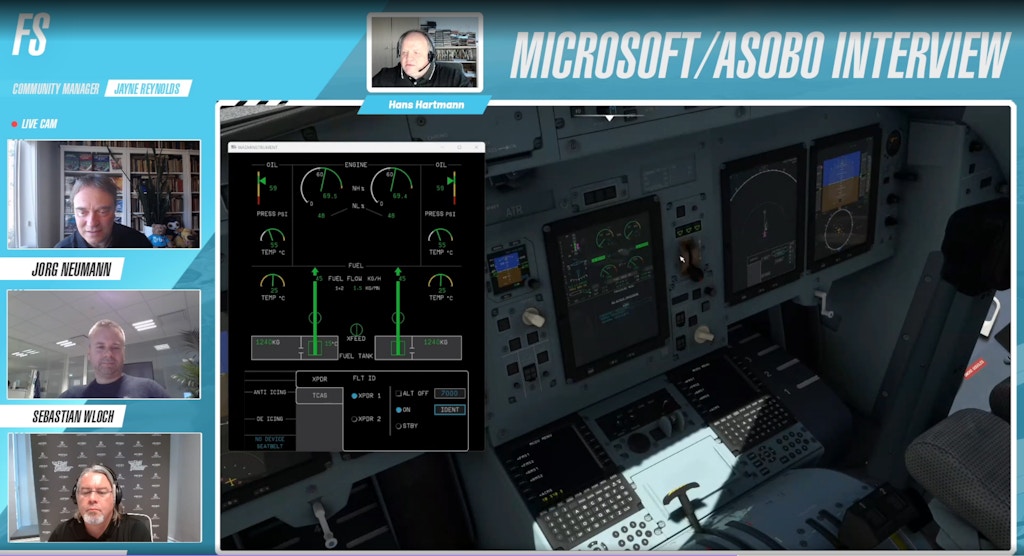
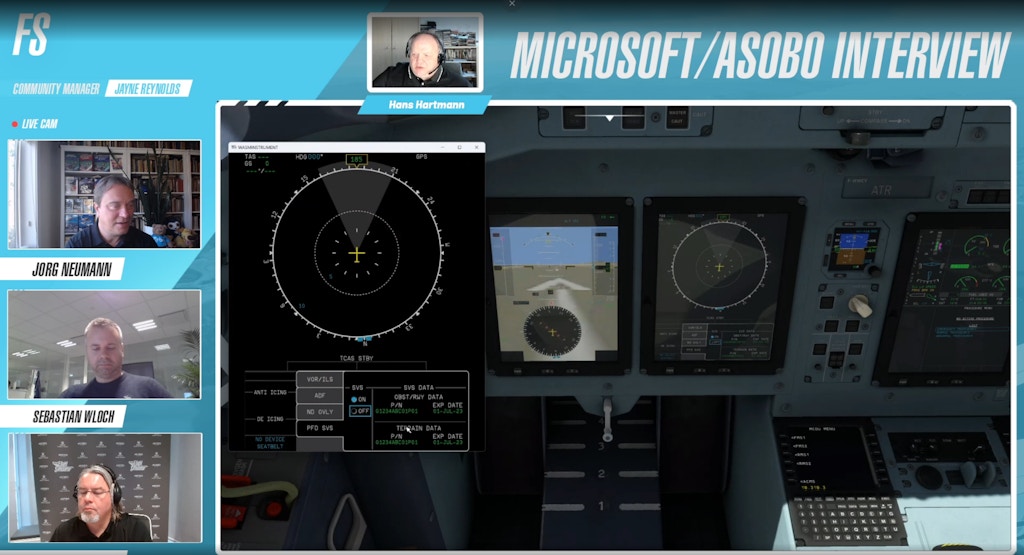
Drawing to a close, Hans showcased the map mode page. Similar to displays found in Boeing aircraft, this map mode shows the flight crew where they are on a top-down view of the airport. However this map comes with an ace up it’s sleeve – a search feature. Simmers will be able to tell the plane which stand or gate they are taxiing into, and the position of that stand will then light up on the airport map. Hans says that this will reduce the need for extra charts, although he did point out that (at least for now) the taxiways on the map are not labelled. Regardless, it will be a welcome feature at unfamiliar airports.
Hans finally showcased the plane’s inbuilt checklists which can be found on the MFD and operated by a set of buttons located behind the thrust levers. Hans commented that these procedures have been verified by real world ATR pilots, and ATR themselves have worked closely with Hans and Asobo to make the project a success.
A set of abnormal checklists are included, although at present the plane does not have any failures simulated. Jorg pointed out on stream that the reason for this was not laziness on the part of the developer, but instead concerns arising from ATR themselves. Jorg said that the team at Asobo were pressing ATR and encouraging them to help with the inclusion of failures, but quipped “they are quite sensitive [about] showing their equipment breaking”. He also sought to reassure simmers that “real pilots who fly the plane every day give us the a-okay that this is great”.


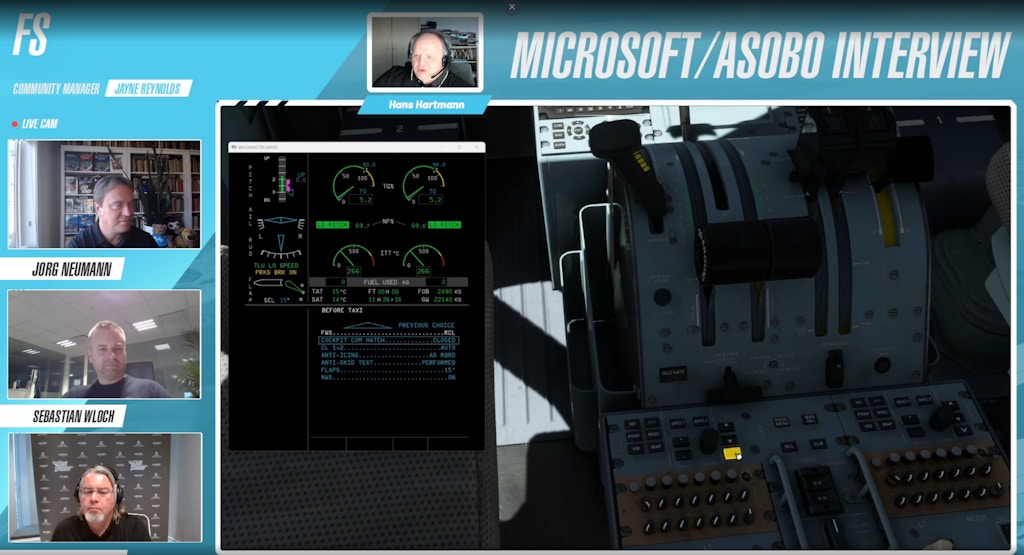
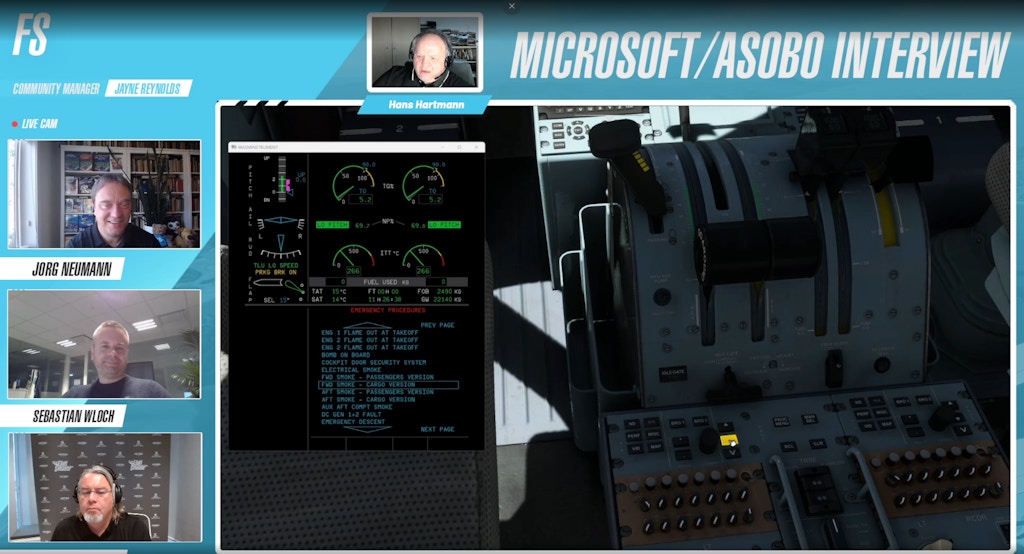

The ATR is a complex aircraft to fly, and at this stage Jorg and Hans have been unable to say how and in what form they will provide accompanying tutorials and/or documentation with the product when it goes to market. However both developers seemed to express on stream that their intention was to provide some out-of-the-box guide which will help new pilots pick up the plane.
That being said, the ATR42/72-600 is being released under a new moniker of ‘Expert Series 1’, and Jorg made clear on stream that “this is an expert plane” (01:17:15), suggesting that Hans and Asobo are aiming at in-depth systems and procedures, dare I say it a “study level” aircraft. The ATR being labelled Expert Series 1 would also denote that Jorg and his team at Asobo are intending to release more complex, high fidelity aircraft in the future under the Expert Series label.
Offering further comment, Jorg said: “With the expert series, we want to just set it apart and make sure that this will make core simmers really happy”. No doubt that there will be speculation over what is coming next for the expert series, and we will be sure to bring it you here first at FSElite.net when we know!






